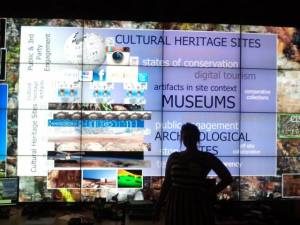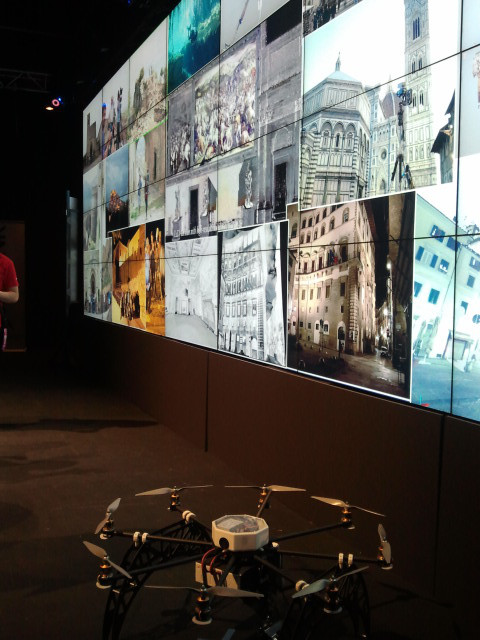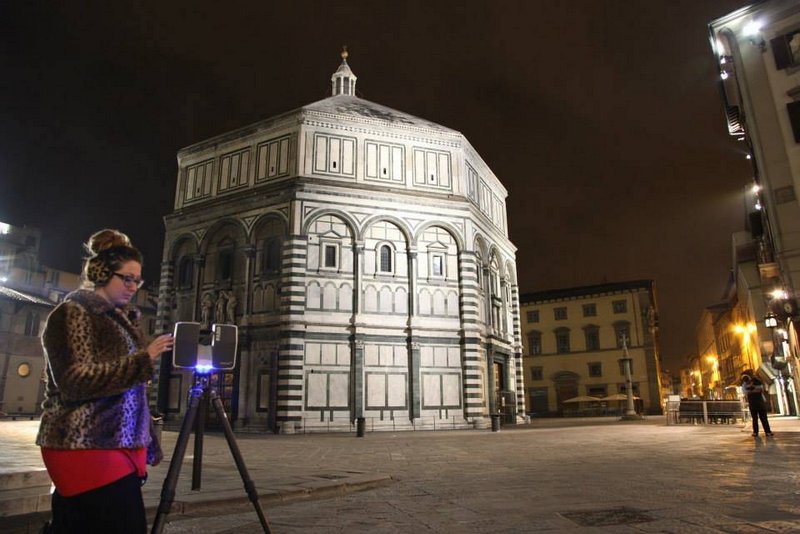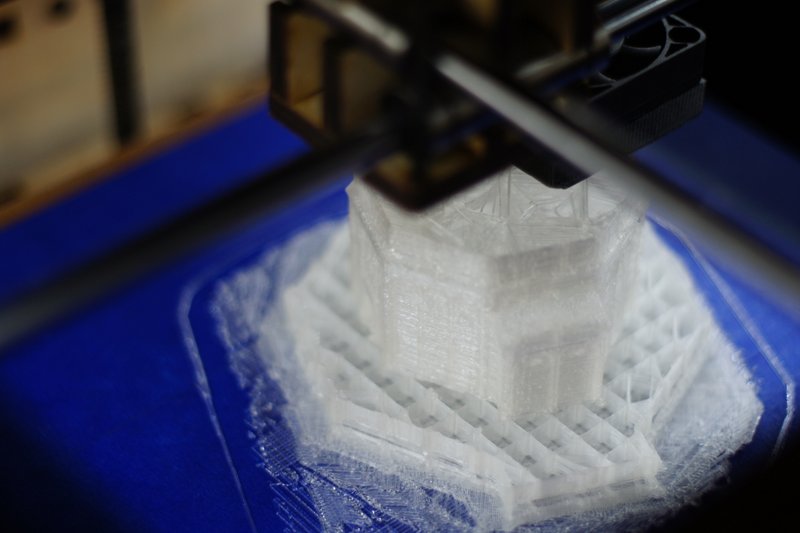
A beautifully and precisely rendered 3D map of an emerging new archaeological site;
An exact replica of a rare and priceless artifact you can hold in your hand, for study or to just set on your shelf;
An authentically fact-based image of an ancient palace, reconstructed digitally to show how it would have looked in its full splendor before it became a ruin for study by archaeologists following the ravages of time;
High-tech “eyes” that can see ancient structures hidden from the naked eye by thick forest overgrowth.
These are but a few examples of what the emerging new science of digital archaeology can offer the interested scholar and public alike. It is, in a very real sense, revolutionizing the way scientists do archaeology, and the way the general public can see and share in the experience of the discoveries in the field.
One archaeologist is on a mission to bring the new science out of its ivory tower and before the public eye. Ashley Richter, who worked and studied as a researcher in cultural heritage diagnostics at the University of California San Diego’s Center of Interdisciplinary Science for Art, Architecture and Archaeology, describes herself as “a laser scanning, 3D printing, digital archaeologist and artist”. She’s seen field work in the United States, the United Kingdom, Jordan, Cyprus, Greece, and most recently, all over Italy. Now, she’s capitalizing on her digital expertise to promote a concept she calls “Open Access Antiquarianism“.
“It’s a collaborative project between archaeologists and computer scientists on the intersection between art, archaeology and technology to encourage people to access and become active with digital heritage,” Richter explains. “After pushing the technological limits of data capture and archaeological visualization at sites like Petra and Palazzo Vecchio, we’d like to take the tools and methodologies we’ve been building and promote archaeology with it in the public sphere.”
To kickstart the movement, she is digitally organizing a Cabinet of Curiosities show of archaeological LiDAR printed furniture (what she calls “literal armchair archaeology”), 3D printed archaeological artifacts, and point cloud visualization for anyone to peruse. In addition, she has joined with Popular Archaeology in a collaborative effort to get the word out on the world of digital archaeology through her blog, Adventures in Digital Archaeology, which can be reached directly at the original website or an ongoing basis at the magazine site.
But whether or not Richter’s campaign gains traction, it is clear that the field of digital archaeology is here to stay as an increasingly important element in archaeological research and presentation— not to mention that it will—at least for those of us who are not into digging in the dirt and reading technical reports—make it all a whole lot more fun.
___________________________________
Richter’s compilation of recent data for display on the Qualcomm Institute V-Room Wall for UCSD’s TEDX open forum (In the foreground: one of the CISA3 drones used in data collection).
___________________________________
Richter laser scanning the exterior of the Baptistery of St. Giovanni, Florence.
___________________________________
Above: 3D printer model Richter helped to develop as part of a “Russian Dolls” series building up from a mini size to an eventual large diagnostic dollhouse of the Baptistery of St. Giovanni in Florence. It was built from photos during a diagnostic survey in 2013 with the Center of Interdisciplinary Science for Art, Architecture, and Archaeology at the University of California, San Diego.
* Images provided courtesy Ashley Richter
Below, Richer shows what digital archaeology can do for mapping ‘hard-to-get-to’ places, especially if they’re due for imminent destruction by modern day plans:
________________________________________________________
___________________________________
Read about the most fascinating discoveries with a premium subscription to Popular Archaeology Magazine. Find out what Popular Archaeology Magazine is all about. AND MORE:
On the go? Get the smartphone version of Popular Archaeology as an app or as an ebook.
Popular Archaeology’s annual Discovery Edition eBook is a selection of the best stories published in Popular Archaeology Magazine in past issues, with an emphasis on some of the most significant, groundbreaking, or fascinating discoveries in the fields of archaeology and paleoanthropology and related fields. At least some of the articles have been updated or revised specifically for the Discovery edition. We can confidently say that there is no other single issue of an archaeology-related magazine, paper print or online, that contains as much major feature article content as this one. The latest issue, volume 2, has just been released. Go to the Discovery edition page for more information.









